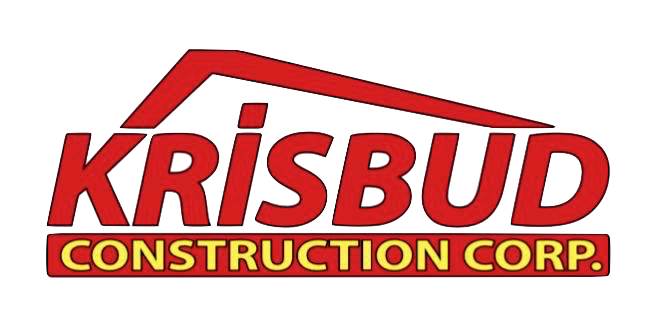Diagonal Brick Cracks in Chicago Buildings: What They Mean and When to Worry
You glance up at your brick wall and notice a crack zigzagging down at an angle. It doesn’t seem huge, but it wasn’t there last year. In Chicago, this type of cracking isn’t just common—it’s often a red flag.
Not all cracks are created equal. Diagonal brick cracks can be a symptom of bigger issues beneath the surface, and in a city like ours with a freeze-thaw climate and shifting soil, they show up more than you'd think.
This guide breaks down what diagonal cracks really mean, what causes them, and when it's time to call a professional before the issue spirals into major structural damage.
Not All Brick Cracks Are the Same
Brick buildings naturally settle over time. But when you see step cracks or diagonal fractures in the masonry wall, it’s often a sign of movement—and not the good kind.
These types of cracks typically form a stair-step pattern along the mortar joints, and they show up on walls, chimneys, or around windows. While some hairline cracks are harmless, diagonal cracking is a clue that your building might be under structural stress.
What Causes Diagonal Brick Cracks in Chicago?
1. Foundation Settlement or Shifting
As buildings settle, some areas may sink more than others. This uneven movement puts stress on load-bearing brick walls, causing diagonal or stair-step cracks to form.
Chicago’s mixed clay soil and aging foundations are a recipe for slow, uneven movement beneath older structures.
2. Lintel Failure Over Windows and Doors
Lintels support the brick above doors and windows. When they rust, sag, or fail, you’ll often see cracks starting at the corner of a window and angling upward.
These cracks may seem cosmetic at first, but they’re a warning that the load above the opening isn’t being supported properly anymore.
3. Weight and Structural Load Distribution
Buildings change over time—walls get removed, floors sag, roofs settle. This shifts the way weight is distributed, especially in older Chicago buildings that were built with unreinforced masonry.
Diagonal cracks are the wall’s way of saying, "Hey, something's changed and I’m feeling the pressure."
4. Moisture Infiltration and Freeze-Thaw Damage
Moisture is the silent killer of masonry. Water that enters small cracks or mortar gaps expands when it freezes, pushing joints apart.
Chicago winters amplify this process, leading to spalling, crumbling mortar, and eventually diagonal cracking along weakened sections of the wall.
When Should You Worry?
Some cracks are superficial. Others are like smoke from a fire you can’t see yet. Here are signs a diagonal crack could be serious:
The crack is wider than 1/8 inch or growing over time
You see cracking both inside and outside the building
The wall appears to bow or bulge outward
Gaps appear around windows, ceilings, or door frames
You notice cracking near a chimney or parapet wall
These are signs of deeper structural movement, not just surface-level aging.
What to Do If You Spot Diagonal Cracks
Step one? Don’t panic. Step two? Don’t patch it and forget it.
Cosmetic fixes like caulk or mortar touch-ups won’t solve the underlying issue. In fact, they might trap moisture and make things worse. The right move is to get a professional masonry inspection.
A trained masonry contractor in Chicago will evaluate whether the crack is due to foundation settlement, failing mortar joints, water damage, or other issues. Depending on the diagnosis, solutions might include:
Tuckpointing to repair and restore mortar joints
Lintel replacement if the cracking is above an opening
Crack stitching or masonry reinforcement techniques
Structural bracing or foundation stabilization for severe settlement
Why This Happens So Often in Chicago Buildings
The Windy City isn’t easy on brick. We have:
Harsh freeze-thaw cycles
Aging construction, often with Chicago common brick and lime-based mortar
Flat-roofed buildings with poor drainage, leading to parapet wall damage
Soil that expands, contracts, and shifts with moisture levels
Combine all that with a century-old structure that’s never been inspected, and diagonal cracking is just waiting to happen. This is why masonry restoration in Chicago is so important to the maintenance and preservation of these older buildings.
Why Chicago Property Owners Trust Krisbud Construction
We’ve been repairing brick walls, lintels, chimneys, and cracked foundations as a Chicago masonry restoration company for over 20 years. We know the difference between a cosmetic crack and a structural emergency—and we’ll tell you the truth, not just what gets us the job.
Our team specializes in diagnostic masonry inspections, tuckpointing, lintel replacement, and historic restoration work. Whether you're managing a two-flat, a historic greystone, or a commercial building in Logan Square, we deliver long-lasting solutions.
Contact us today for a free masonry inspection—because what starts as a small stair-step crack could eventually lead to costly repairs, or worse, structural failure.
It’s not just about saving your wall. It’s about protecting your property’s integrity—and your peace of mind.

